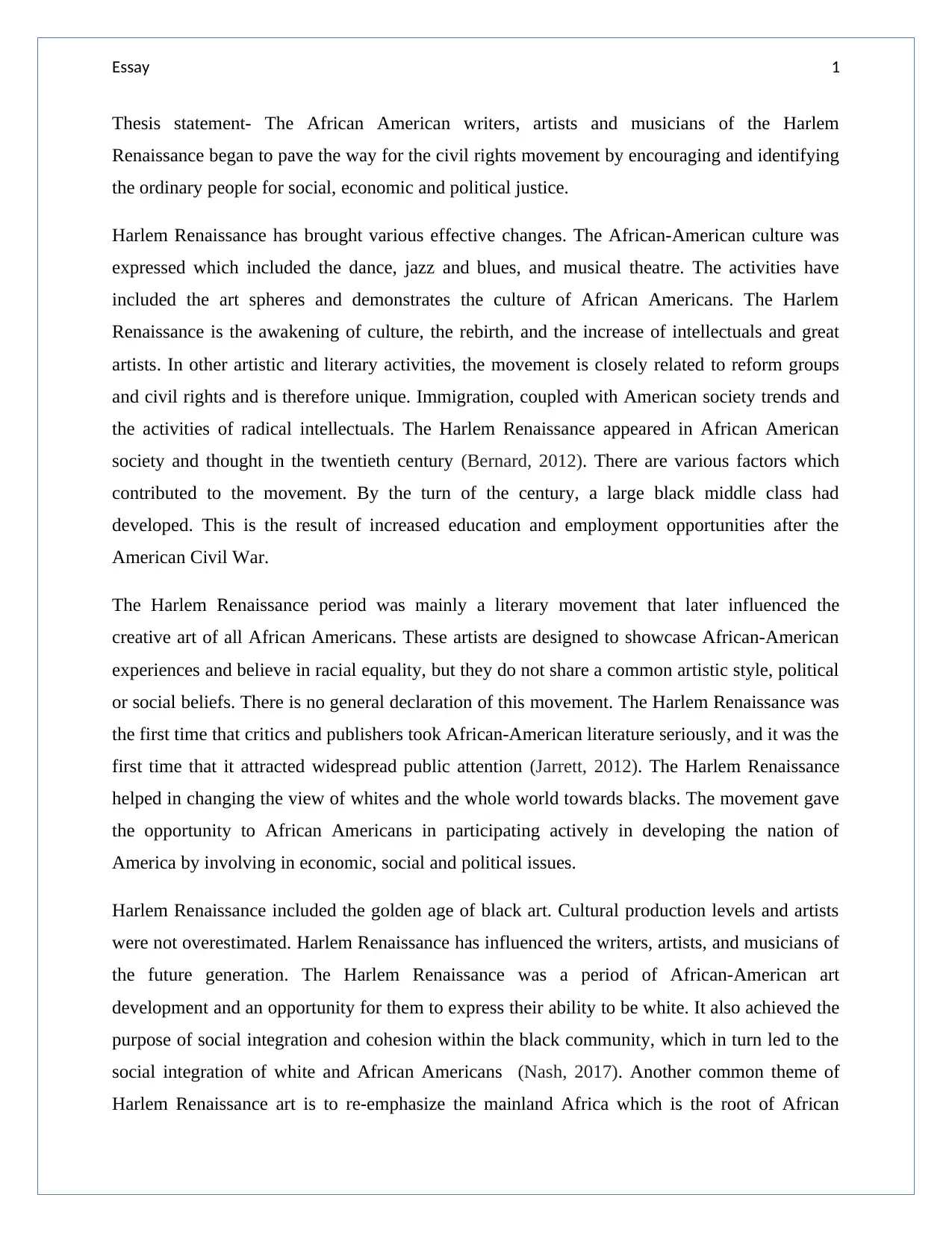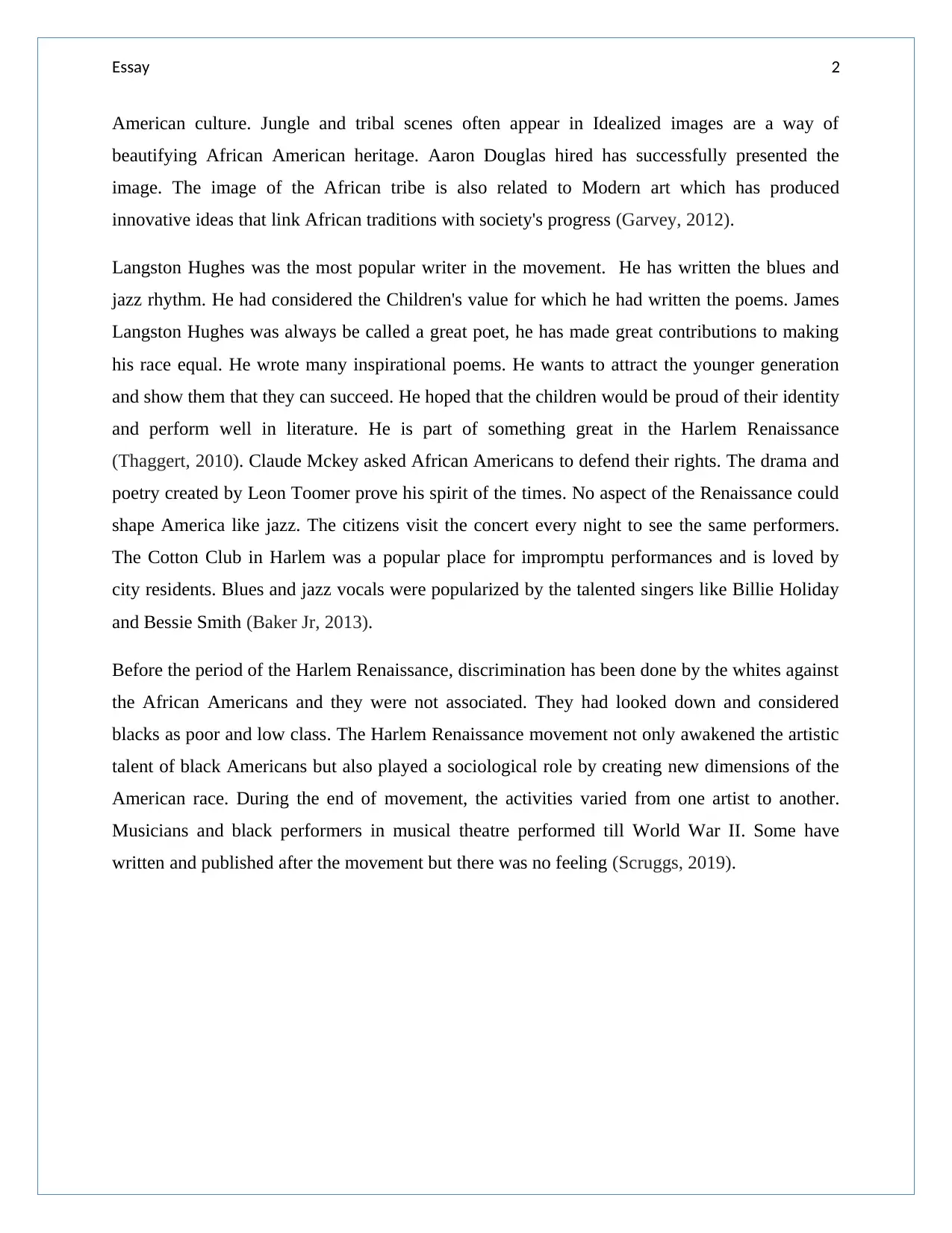Essay on the Harlem Renaissance: A Literary and Artistic Movement
VerifiedAdded on 2022/09/25
|4
|1009
|36
Essay
AI Summary
This essay delves into the Harlem Renaissance, a significant cultural and artistic movement that emerged in the African American community during the 1920s and 1930s. The essay's thesis centers on how African American writers, artists, and musicians of this era championed social, economic, and political justice, thereby laying the groundwork for the civil rights movement. It explores the diverse artistic expressions of the Harlem Renaissance, including dance, jazz, blues, and musical theater, along with the movement's roots in immigration, societal trends, and intellectual radicalism. The essay highlights the contributions of key figures like Langston Hughes and Aaron Douglas, examining how their work reshaped perceptions of African Americans and fostered a sense of racial pride and cultural identity. Furthermore, it discusses the movement's influence on future generations of artists and its role in challenging racial discrimination, advocating for social integration, and re-emphasizing African heritage. The essay references various scholars and their works to support its arguments, providing a comprehensive overview of the Harlem Renaissance's lasting impact on American culture and history.
1 out of 4











![[object Object]](/_next/static/media/star-bottom.7253800d.svg)